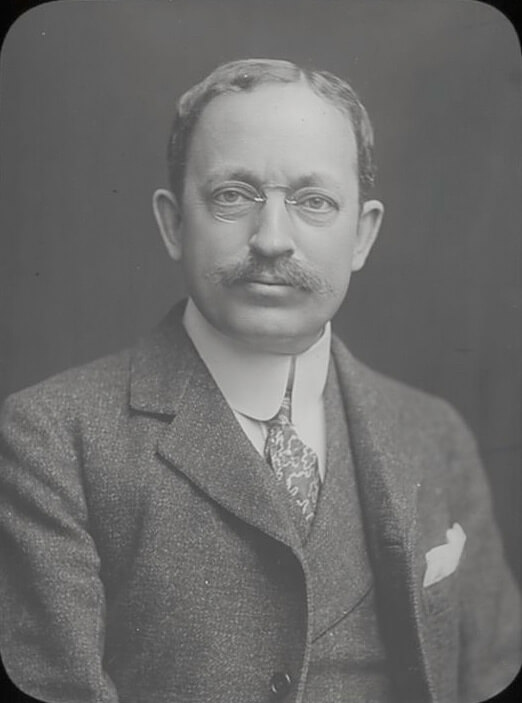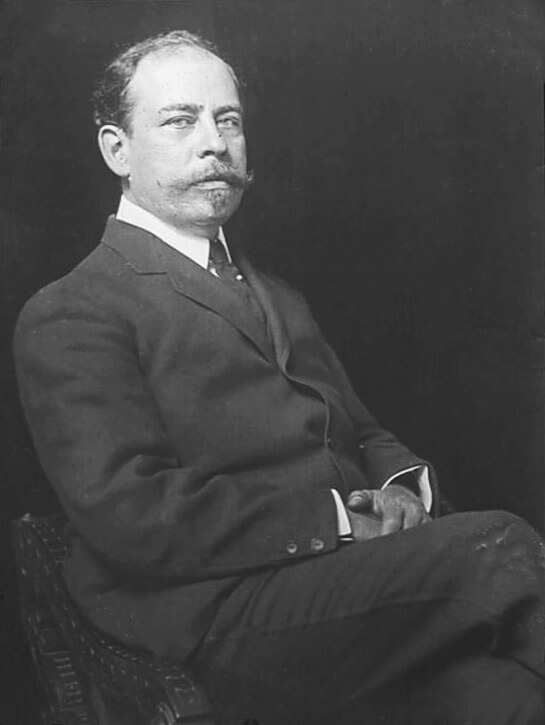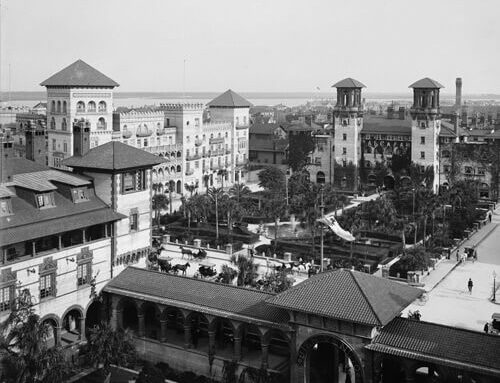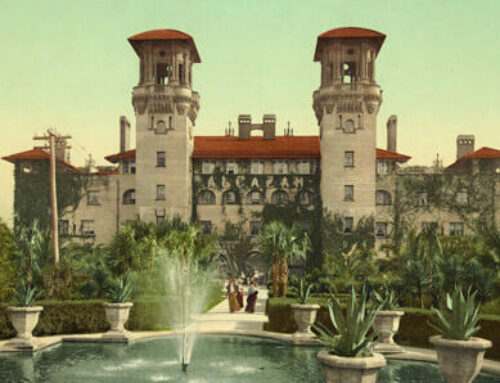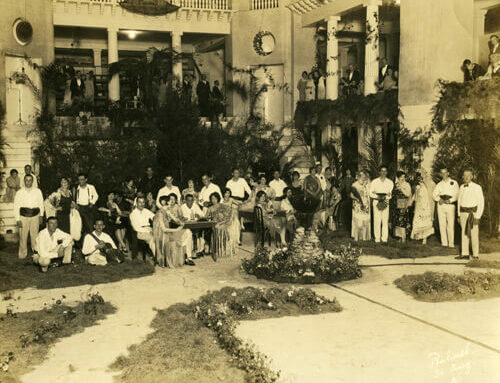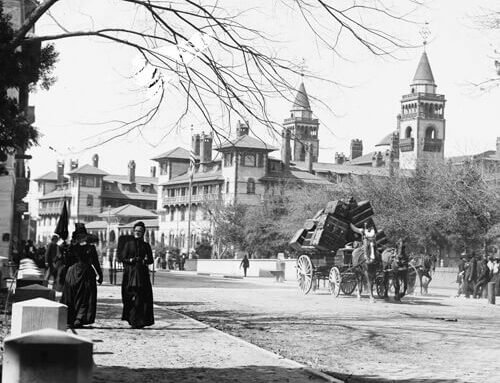Hotel Alcazar concept rendering, St. Augustine, 1888, from American Architect and Building News, August 25, 1888
Carrère and Hastings: Architects of the Gilded Age
“Suddenly I heard a great commotion in the hall. It seemed to me as if every door was being slammed, and the first thing I knew… Mr. Hastings was standing in our office… “We are going to Florida! We’ve got a million dollar hotel to build there!”
John Merven Carrère
John Merven Carrère (1858-1911) and Thomas Hastings (1860-1929) were two of the most prominent architects of America’s Gilded Age.
Trained at the École de Beaux Arts—the prestigious Parisian art school— Carrère and Hastings apprenticed with McKim, Mead, and White in New York before opening their own firm in 1885. The young architects were launched on the national stage when Henry Flagler commissioned them to design two hotels and two churches in St. Augustine, Florida from 1886-1890.
Built of poured concrete enlivened with red terracotta tiles and decorative moldings, courtyard fountains, and distinctive towers, the two hotels created by Carrère and Hastings evoke the Spanish heritage of St. Augustine, and the Renaissance aspirations of the wealthy Gilded Age guests who wintered in the Ancient City. Hastings outlined his approach to designing the hotels:
“I spent much of my time roaming around St. Augustine endeavoring to absorb as much of the local atmosphere as possible. I wanted to retain the Spanish character of St. Augustine and so designed the buildings with the architecture of the early houses here with their quaint over-hanging balconies.”
Although cast in the Spanish Renaissance style the Ponce de Leon and the Alcazar hotels demonstrate Carrère and Hastings’ commitment to the principles of Beaux-Arts architecture. Both hotels feature a regimented and orderly arrangement of public spaces, guest rooms, and service spaces arranged along a central axis. While traditional in form and concept, the use of concrete in the design of Flagler’s hotels anticipated the embrace of the material by Modernist architects in the 20thcentury.
Following their early success in St. Augustine, Carrère and Hastings went on to produce some of America’s finest and most notable edifices. Their output was vast encompassing major civic buildings, private residences, public plazas and parks, all defined by the Beaux-Arts principles they studied in Paris. In addition to Flagler’s St. Augustine hotels, their most celebrated commissions include, Flagler’s Whitehall (1902), the New York Public Library (1911), the Henry Clay Frick residence (1914).

